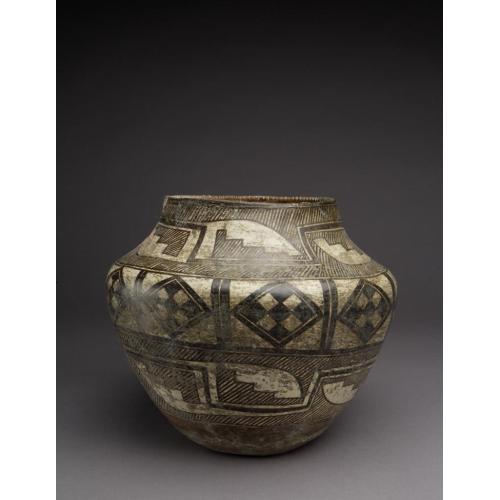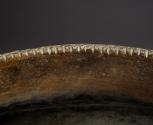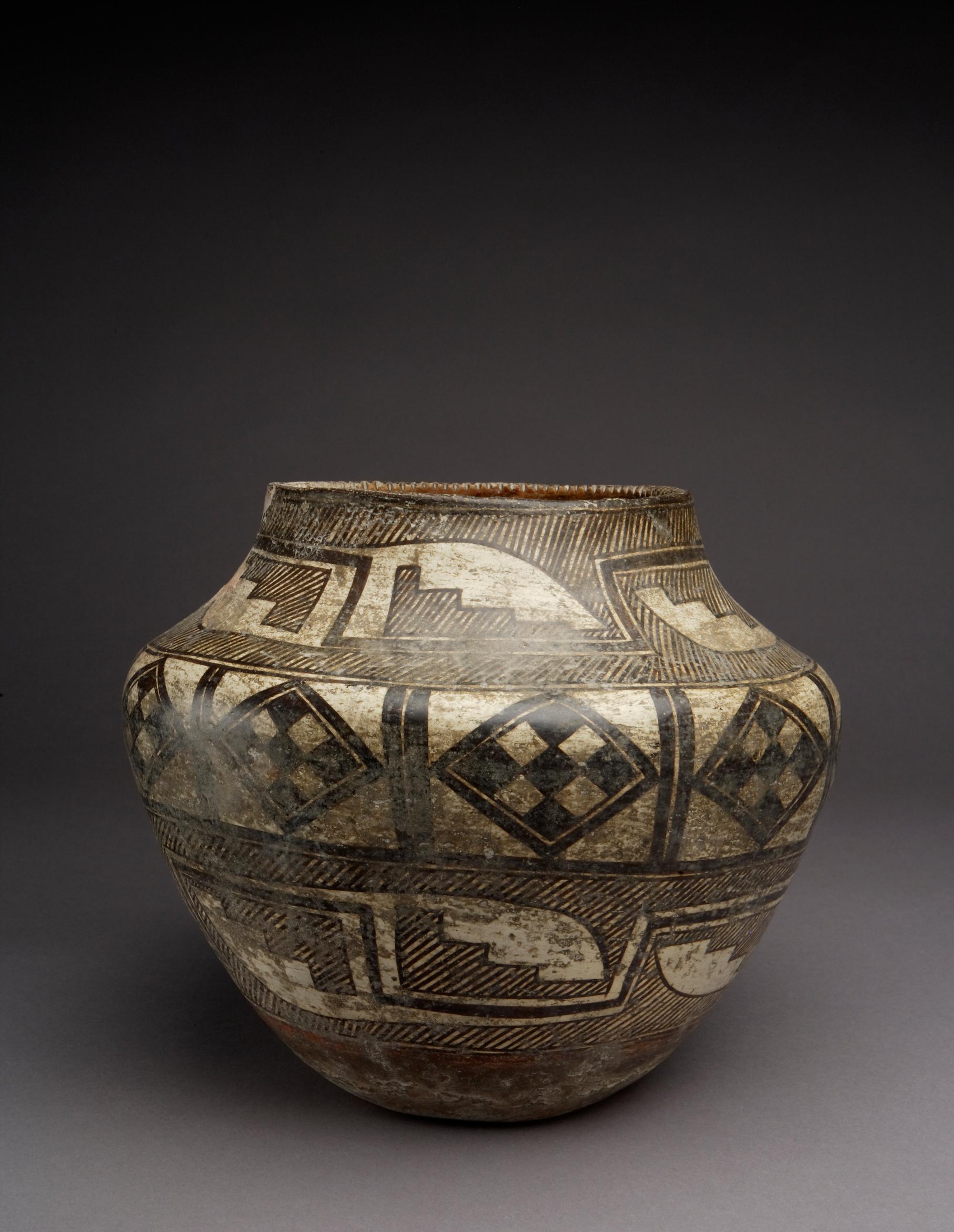
Photograph by Addison Doty. Copyright 2011 School for Advanced Research.
Water jar
Date: 1890-1910
Artist or Maker: Unknown
Dimensions:
Dimensions: 25.4 × 30.5 cm (10 × 12 in.)
Weight: 2.4 kg (5.3 lb.)
Medium: clay | paints
Credit Line: Indian Arts Fund purchase for the permanent collection, 1923.
Place Made:
Valencia, Cibola, Bernalillo, and Sandoval Counties, New Mexico, Southwest, United States, North America
Object Number: IAF.46
Not on view
Tribal Collection Review RemarksAccording to the participants in the Acoma collection review visit April 22-24, 2015 (Events Record “Collection Review: Acoma Pueblo, Review 1”): Though this form is usually described as a water jar, it is important to note that jars of this form could be used for other purposes as well. This jar has a slight sheen on the interior surface which may have come from animal fat by using the jar as a vessel for serving stew. There is damage to the slip on the base of the jar that may have been caused by setting the jar on hot rocks for the purpose of reheating food contents. There is also erosion over much of the surface of the jar which could have been caused by washing it prior to sale, possibly to remove soot that may have been on the jar from using it to reheat food. It may have been used to store water as well; it could have been a jar used for more than one purpose.
There is one area in particular where the slip is more heavily chipped than on the rest of the jar. The white slip in that area is very thick and that may be part of why it has chipped so much.
This jar has indentations on the interior rim that are very similar to ones on the interior mouth of a jar the participants viewed the day before—IAF.45. They felt it was possible the jars were made by the same artist (especially since they were purchased from the same source), or that this particular decoration may have been a trend during the time the jars were made.
The diamond checkerboard design that appears on the shoulder of the jar is very indicative of Acoma pottery. There is another Acoma piece in the IARC collection, IAF.1063, a flat-bottomed bowl, that has this same motif on it.
According to the participants in the Acoma collection review visit February 26-27, 2019 (Events Record “Collection Review: Acoma Pueblo Review 12”): The shape of a water jar is characterized by usually having a concave base (can also have a flat base) leading to a wider body and shoulder area. The shoulder, which is typically rounded but can also be sharp, leads inward and up to the neck and opening of the water jar. Historic water jars will sometimes have an indentation from the base the pot was built on (also known as a puki).
Water jars of all sizes are made and used. Medium to small size water jars are more commonly used to carry water as the weight of a filled water jar can become quite heavy. Large sized water jars would be used for storing water. Today at Acoma, water jars are still being used and made in both traditional natural and commercial materials.
In Collection(s)
The Indian Arts Research Center, in collaboration with Native American community scholars, strives to present accurate collections records. Records may be updated as new information becomes available and is reviewed with the Native American community having cultural affinity to particular items. Please write to iarc@sarsf.org if you have questions or concerns related to the documentation.


